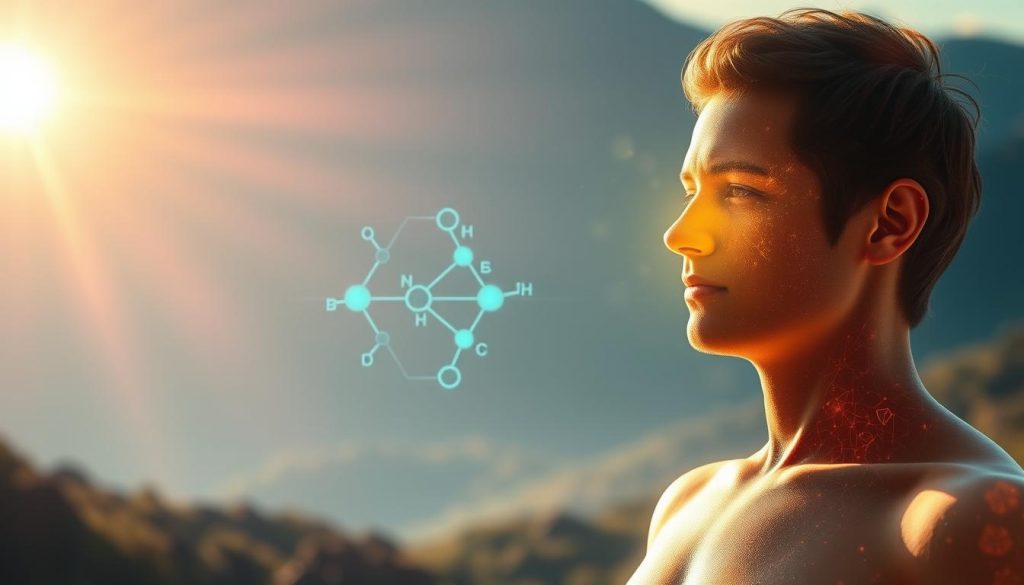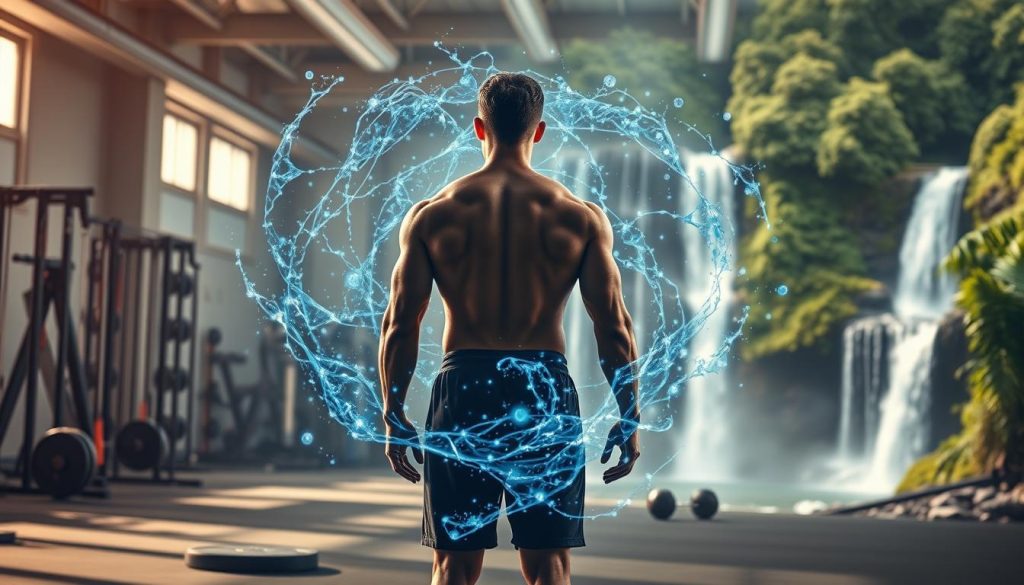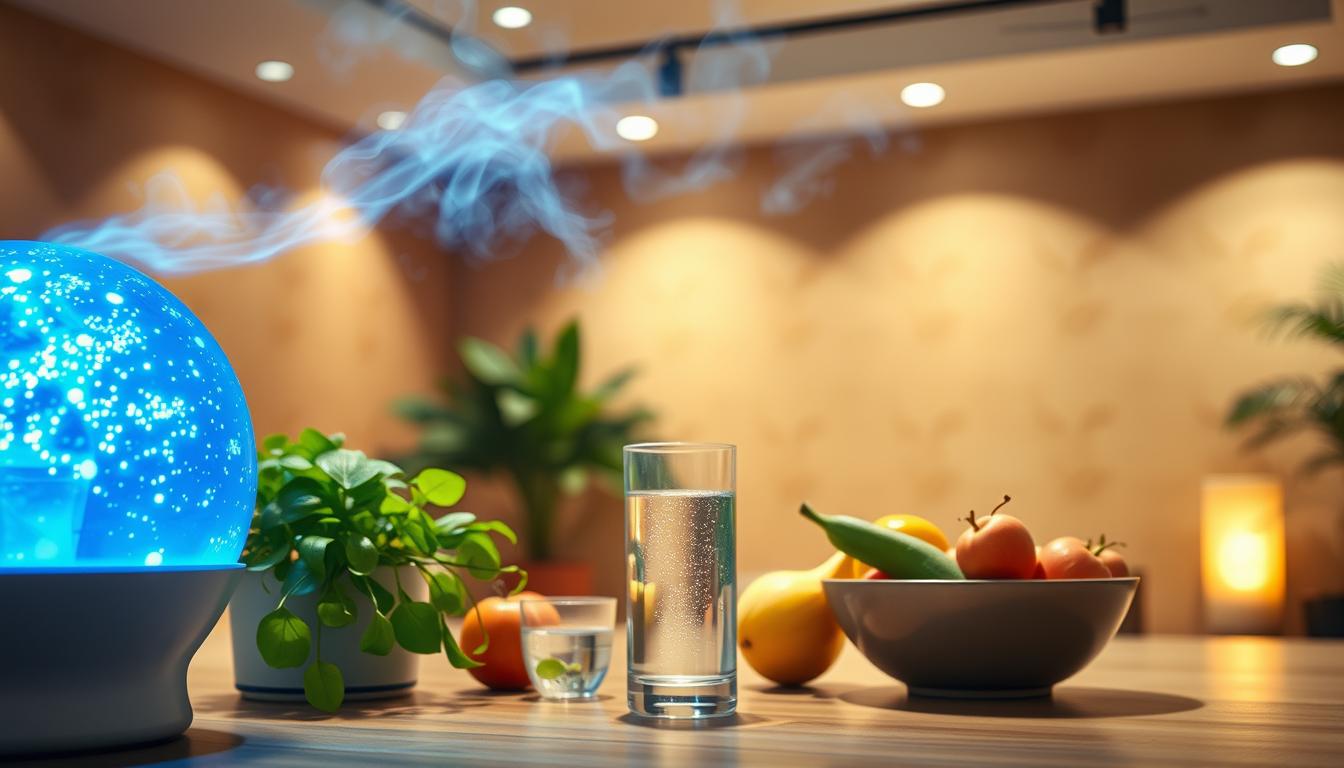Are you curious about the buzz surrounding negative ions and their potential health benefits? As interest in negative ion therapy continues to grow, it’s time to take a closer look at how these tiny particles can impact our overall well-being. Get ready to uncover the surprising ways negative ions work to improve air quality, boost mood, alleviate stress, and much more.
In this comprehensive guide, we’ll explore the science behind negative ions and their far-reaching effects on various aspects of our lives. From understanding the basics of what negative ions are and where they’re found, to diving into the latest research on their mood-boosting effects and potential to enhance physical performance, we’ve got you covered. So, let’s embark on this journey together and discover how harnessing the power of negative ions could be the key to unlocking optimal health and vitality.
What Are Negative Ions and Where Are They Found?
Negative ions are electrically charged particles that are naturally present in the air. A negative ion definition describes them as atoms or molecules that have gained an extra electron, giving them a negative charge. These invisible, odorless particles are often referred to as air ions due to their abundance in the Earth’s atmosphere.
Understanding the Basics of Negative Ions
Negative ions are created through various natural processes, such as the movement of water, the effects of sunlight, and the growth of plants. When water molecules collide or break apart, they release electrons that attach to nearby air molecules, forming negative ions. Similarly, when sunlight interacts with certain surfaces or when plants undergo photosynthesis, they also contribute to the production of negative ions in the environment.

Natural Sources of Negative Ions
There are numerous natural negative ion sources that can be found in various environments. Some of the most well-known sources include:
- Waterfalls and moving water bodies
- Ocean waves and beaches
- Mountains and forests
- Thunderstorms and lightning
- Indoor plants and green spaces
These natural settings are known for their high concentrations of negative ions, which contribute to the fresh, invigorating feeling often associated with being in nature. The abundance of negative ions in these environments has been linked to various potential health benefits, which will be explored further in the following sections.
The Science Behind Negative Ions and Their Impact on Health
Recent negative ion research has shed light on the potential health effects of negative ions. While more studies are needed to fully understand the mechanisms at play, scientific evidence suggests that exposure to negative ions may have a positive impact on various aspects of human health.

One area of interest is the effect of negative ions on respiratory health. A study published in the Journal of Negative Results in BioMedicine found that negative ion exposure reduced symptoms of allergic rhinitis, such as sneezing and nasal congestion. The researchers hypothesized that negative ions may help to reduce inflammation in the airways and improve overall respiratory function.
Another potential benefit of negative ions is their impact on mental well-being. A review published in the journal Frontiers in Psychology examined the effects of negative ion exposure on mood and cognitive performance. The authors found that negative ions were associated with reduced symptoms of depression and anxiety, as well as improved attention and memory.
Negative ions may also play a role in regulating sleep patterns. A study conducted by researchers at the University of California, Berkeley, found that participants exposed to high levels of negative ions reported improved sleep quality and reduced symptoms of insomnia. The researchers suggested that negative ions may help to regulate the production of melatonin, a hormone that plays a key role in the sleep-wake cycle.
While the exact mechanisms behind these health benefits are still being explored, some researchers believe that negative ions may work by altering the balance of serotonin and other neurotransmitters in the brain. Additionally, negative ions are thought to help neutralize positively charged particles in the air, such as allergens and pollutants, which may contribute to their positive effects on respiratory health.
As research continues to uncover the potential health benefits of negative ions, it is becoming increasingly clear that these tiny particles may play an important role in promoting overall well-being. From improving air quality to boosting mood and enhancing sleep, the science behind negative ions is a fascinating area of study with promising implications for human health.
How Do Negative Ions Work to Improve Air Quality?
Negative ions play a crucial role in enhancing air quality by neutralizing pollutants and allergens. These tiny particles work tirelessly to create a cleaner, healthier indoor environment.
The Role of Negative Ions in Removing Pollutants
Negative ions attract and bond with positively charged particles like dust, pollen, smoke, and other pollutants. This process, known as agglomeration, causes these particles to become heavier and fall out of the air, effectively removing them from the breathing space. By reducing the concentration of airborne pollutants, negative ions significantly improve air quality.
Negative ions are particularly effective at removing the following common indoor air pollutants:
- Dust and particulate matter
- Pollen and other allergens
- Smoke and odors
- Bacteria and viruses
Negative Ions vs. Traditional Air Purification Methods
While traditional air purification methods like HEPA filters and activated carbon can be effective at removing certain pollutants, they often fall short when compared to the comprehensive air purification provided by negative ions. The following table highlights some key differences:
| Feature | Negative Ions | Traditional Methods |
|---|---|---|
| Pollutant removal | Attracts and neutralizes a wide range of pollutants | Limited to specific particle sizes or types |
| Maintenance | Low maintenance, no filters to replace | Requires regular filter changes |
| Energy efficiency | Low energy consumption | Can be energy-intensive |
| Additional benefits | May improve mood and alleviate stress | Focuses solely on air purification |
By harnessing the power of negative ions, you can achieve a higher level of air purification while enjoying the potential emotional and physical benefits they provide. Incorporating negative ion generators into your home or office can be an effective way to improve air quality and overall well-being.
Negative Ions and Their Potential to Boost Mood and Alleviate Stress
In today’s fast-paced world, stress and mental health challenges have become increasingly prevalent. However, an often-overlooked aspect of our environment may hold the key to promoting emotional well-being: negative ions. These tiny particles have been linked to a range of potential benefits, including improved mood and reduced stress levels.
Negative ions are believed to interact with the body’s chemistry in a way that promotes positive emotional states. When we breathe in these ions, they are thought to stimulate the production of serotonin, a neurotransmitter that plays a crucial role in regulating mood, sleep, and appetite. By increasing serotonin levels, negative ions may help alleviate symptoms of stress, anxiety, and depression.

The Link Between Negative Ions and Serotonin Production
Research has explored the connection between negative ion exposure and serotonin production. One study conducted by Columbia University found that negative ion generators could help increase serotonin levels, leading to improved mood and reduced symptoms of seasonal affective disorder (SAD). This suggests that incorporating negative ions into our living and working spaces may have a profound impact on our emotional well-being.
Studies on the Emotional Benefits of Negative Ion Exposure
Several studies have investigated the potential emotional benefits of negative ion exposure. A research team at the University of California, Irvine, found that individuals exposed to high concentrations of negative ions reported feeling more energetic, less anxious, and more positive overall. Another study published in the Journal of Alternative and Complementary Medicine revealed that negative ion therapy could help reduce symptoms of depression and improve sleep quality.
While more research is needed to fully understand the mechanisms behind these effects, the growing body of evidence suggests that negative ions may be a valuable tool for promoting mental health and reducing stress levels. By incorporating negative ion generators or spending time in nature, where negative ions are abundant, individuals may experience a noticeable boost in their emotional well-being.
Can Negative Ions Enhance Physical Performance and Recovery?
Athletes and fitness enthusiasts are always seeking ways to improve their physical performance and accelerate exercise recovery. While proper training, nutrition, and rest are crucial factors, emerging research suggests that negative ions may also play a role in enhancing athletic performance and promoting faster recovery.
Exposure to negative ions has been linked to increased energy levels and reduced fatigue, which can directly impact physical endurance. Studies have shown that individuals who spend time in environments rich in negative ions, such as near waterfalls or in forests, report feeling more energized and alert. This boost in energy can translate to improved athletic performance, allowing athletes to push themselves further and maintain higher levels of intensity during training and competition.

In addition to enhancing energy levels, negative ions may also aid in post-exercise recovery. After intense physical activity, the body undergoes a period of stress and inflammation as it works to repair and rebuild muscle tissue. Research indicates that exposure to negative ions can help reduce inflammation and promote faster muscle regeneration, leading to improved recovery times between workouts.
The potential benefits of negative ions for athletic performance and recovery can be attributed to their ability to regulate serotonin levels and improve overall well-being. Serotonin, a neurotransmitter that plays a crucial role in mood regulation, has also been linked to physical performance. Optimal serotonin levels can contribute to increased motivation, reduced perceived exertion, and improved endurance.
| Benefit | Description |
|---|---|
| Increased Energy Levels | Exposure to negative ions can boost energy and reduce fatigue, allowing athletes to perform at higher intensities for longer periods. |
| Improved Endurance | The energizing effects of negative ions may contribute to enhanced physical endurance, enabling athletes to push through challenging workouts and competitions. |
| Faster Recovery | Negative ions have been shown to reduce inflammation and promote muscle regeneration, leading to quicker recovery between training sessions. |
| Mood Enhancement | By regulating serotonin levels, negative ions can improve mood and motivation, positively impacting overall athletic performance. |
While the potential benefits of negative ions for athletic performance and exercise recovery are promising, further research is needed to fully understand the mechanisms behind these effects and determine optimal exposure levels. As more studies emerge, athletes and trainers may increasingly incorporate negative ion therapy into their training regimens to maximize performance and accelerate recovery.
Harnessing the Power of Negative Ions in Your Home or Office
Bringing the benefits of negative ions into your living and working spaces can greatly improve indoor air quality and overall well-being. With the right strategies and tools, you can create an environment that promotes health, productivity, and relaxation.
Negative Ion Generators: Types and Effectiveness
Negative ion generators are devices designed to produce and release negative ions into the air. They come in various forms, each with their own advantages:
| Type | Description | Effectiveness |
|---|---|---|
| Air ionizers | Standalone devices that emit negative ions directly into the air | Moderate to high |
| Air purifiers with ionizing function | Combines traditional air filtration with negative ion generation | High |
| Salt lamps | Natural salt crystals that release negative ions when heated | Low to moderate |
| Water fountains | Moving water generates negative ions through the Lenard effect | Low to moderate |
When choosing a negative ion generator, consider factors such as room size, ion output, and additional features like air filtration or ozone generation.
Incorporating Nature-Inspired Design for Negative Ion Benefits
Biophilic design, which incorporates natural elements into indoor spaces, can enhance the presence of negative ions and improve overall air quality. Some ways to embrace nature-inspired design include:
- Adding indoor plants, which naturally release negative ions and purify the air
- Using natural materials like wood, stone, and clay in furniture and decor
- Incorporating water features, such as fountains or water walls
- Maximizing natural light and ventilation through windows and skylights
By combining negative ion generators with biophilic design principles, you can create a space that not only feels more connected to nature but also supports your health and well-being through improved indoor air quality.
Negative Ion Therapy: Emerging Trends and Future Research
As research into the benefits of negative ions continues to expand, negative ion therapy is gaining traction as a promising approach to enhancing overall well-being. With a growing body of evidence supporting the positive effects of negative ions on health and wellness, healthcare professionals and researchers are exploring new applications and potential future developments in this field.
Current Applications of Negative Ion Therapy
Negative ion therapy is currently being utilized in various settings, from healthcare facilities to wellness centers, to promote relaxation, reduce stress, and improve air quality. Some of the most common applications include:
- Negative ion generators in hospitals and clinics to create a healing environment
- Portable negative ion devices for personal use at home or in the office
- Negative ion-infused products, such as bedding and clothing, to promote better sleep and comfort
- Incorporation of negative ion-rich natural elements, like indoor waterfalls or salt lamps, in interior design
Potential Future Developments in Negative Ion Research
As interest in the therapeutic potential of negative ions grows, researchers are working to uncover new insights and applications. Some of the exciting areas of future research include:
| Research Area | Potential Applications |
|---|---|
| Cognitive function | Enhancing focus, memory, and learning abilities |
| Immune system support | Boosting the body’s natural defenses against illness |
| Pain management | Alleviating chronic pain and promoting faster recovery |
| Mental health | Developing targeted therapies for anxiety, depression, and other mood disorders |
As the future of negative ion research continues to unfold, it is likely that we will see a surge in innovative applications and targeted therapies designed to harness the power of these beneficial particles. By staying at the forefront of emerging trends in negative ion therapy, healthcare providers and wellness enthusiasts alike can optimize the potential benefits for those seeking to enhance their overall well-being.
Embracing the Power of Negative Ions for Optimal Well-being
As we have explored throughout this article, negative ions offer a wide range of potential benefits for our health and well-being. From improving air quality and reducing stress to boosting mood and enhancing physical performance, the power of negative ions is truly remarkable. By incorporating negative ion exposure into our daily lives, we can tap into the natural healing properties of these invisible particles and experience a greater sense of holistic wellness.
One of the simplest ways to harness the benefits of negative ions is by spending time in nature. Whether you take a walk in the woods, relax by a waterfall, or enjoy a day at the beach, immersing yourself in environments rich in negative ions can help you feel refreshed, revitalized, and more connected to the world around you. For those who may not have easy access to natural settings, negative ion generators offer a convenient alternative for bringing the benefits of negative ions into your home or office.
As research continues to uncover the many ways in which negative ions can support our health and well-being, it is clear that these tiny particles hold immense potential as a natural healing tool. By embracing the power of negative ions and making a conscious effort to incorporate them into our lives, we can take a proactive approach to optimizing our physical, mental, and emotional well-being. So, whether you seek out natural sources of negative ions or invest in a high-quality negative ion generator, know that you are taking a step towards a healthier, happier, and more balanced life.

